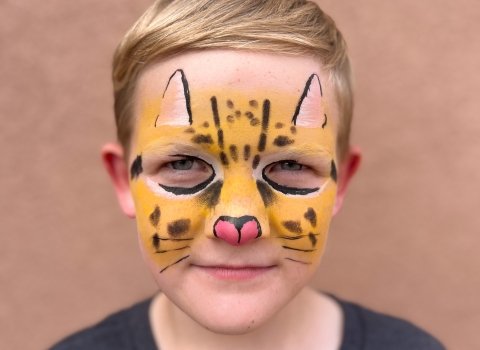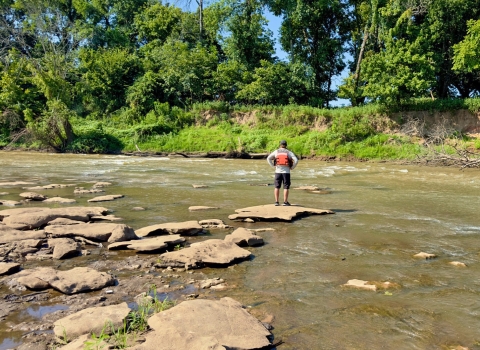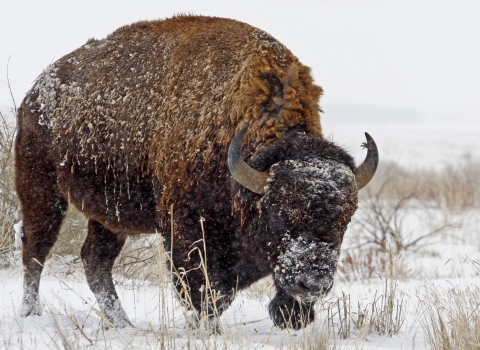Start with a porous plastic base, add peat moss and wetland sod, and you have the southern Idaho recipe for floating waterfowl habitat. Add in some cables, hardware, and elbow grease and put the floating island where North America’s largest waterfowl species is likely to build a nest, and voila, a potential nest site for a pair of trumpeter swans (Cygnus buccinators). The recipe is necessary because the changes to trumpeter swan habitat have left the large birds with limited available nesting habitat.
U.S. Fish and Wildlife Service’s Partners for Fish and Wildlife Program biologist Cary Myler works with private landowners, Native American Tribes, state and federal agencies and non-governmental organizations to promote habitat enhancement projects for native species on private land. Myler partnered with the Shoshone-Bannock Tribes on a project within the Fort Hall Reservation to deploy artificial islands to deliver real habitat for trumpeter swans.
“In Idaho many historic wetlands have been drained and converted to agriculture and the natural hydrology of our stream and wetland systems have been altered. Many of the existing wetland areas that we still have are influenced by irrigation withdrawal, which has the potential to leave trumpeter swan nesting islands without surrounding water. The island and surrounding water create a nesting habitat that is resilient against natural predators. So today we installed an artificial island that is buoyant and will rise and drop with the water levels as irrigators use their irrigation water,” said Myler of the third such island that he’s worked with partners to construct in eastern Idaho.
A lone male trumpeter swan was inhabiting the Flying Y Slough area of the reservation and Dan Christopherson, a wildlife biologist with the Fish and Wildlife Department of the Shoshone-Bannock Tribes, wanted to improve the odds that the bachelor would find a mate, form a pair bond and nest.
The biologists and a crew of Shoshone-Bannock Tribal biological technicians laid an artificial foundation to address the need for more natural trumpeter swan-ready nesting islands.
“It’s 110 square feet of recycled plastic; it’s extremely porous; and it came in two sections. We connected the two sections of island and put a few yards of peat moss on top of the porous plastic, so that it would create a growth medium. Then we took rolls of wetland sod to roll out and cover these islands. The idea is that the sod will grow into the soil substrate, and also grow into the porous plastic,” said Myler, who hauled the ingredients for the island to Fort Hall the morning of the installation. “It’ll become a living island, but it will be growing on the floating base of the plastic.”
Once constructed and towed out to the desired location, the makeshift island was attached on either side with cable to two submerged boulders. Regardless of irrigation or seasonal drawdowns, the island can thus float and stay at the right height for nesting, Myler explained.
“We put boulders on top to weigh it down so that the sod keeps its feet wet and is able to grow and root into the mat,” Myler said.
Unfortunately, the male trumpeter swan didn’t stick around for his date, but he may be back next year for a rendezvous with a possible mate. And the nesting island isn’t going anywhere and could last more than 20 years.
While Christopherson and Myler await the return of the bachelor next year, they’re working with numerous agencies and groups toward the conservation of the long-lived birds on a broader scale. Trumpeter swan conservation partners include the Idaho Department of Fish and Game, Wyoming Wetland Society, Trumpeter Swan Society, Teton Regional Land Trust, National Wildlife Refuge System, Native American Tribes, private landowners and other individuals who have contributed funding and resources to the conservation effort. In addition, the Shoshone-Bannock Tribes have a long history of involvement with and are significant partners in the conservation of the iconic bird.



